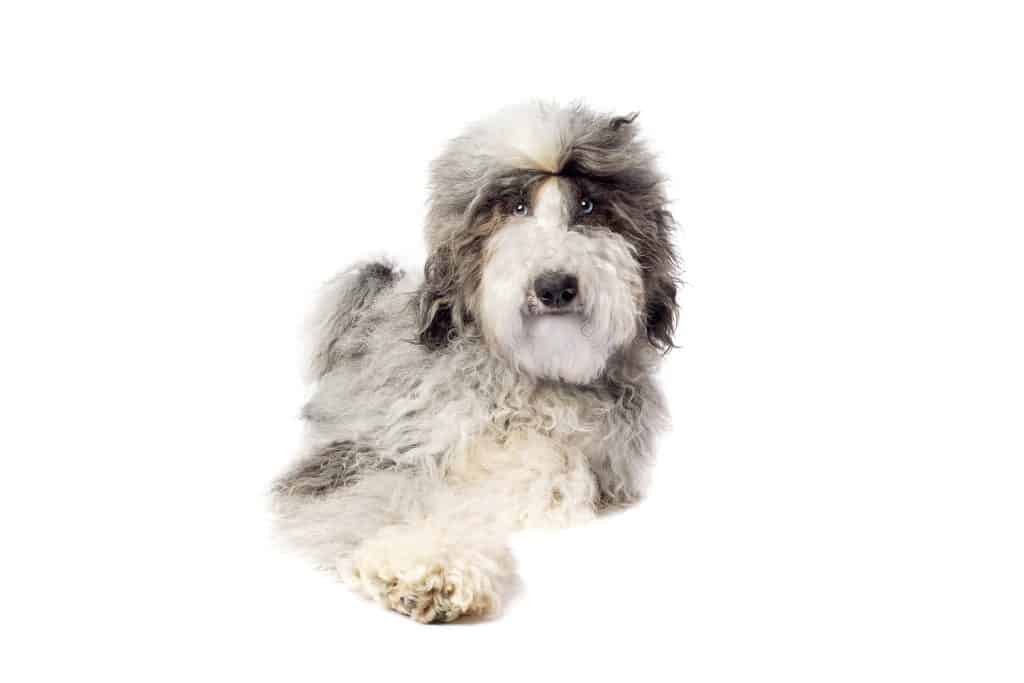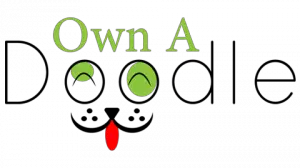Sheepadoodles – also known as Sheeppoos – are among the most wanted hybrid designer breeds. They are an adorable mix of the Old English Sheepdog and the Poodle. They are highly sought-after because of their appearance and their ability to adjust to families.
As a general rule, Sheepadoodles are not always hypoallergenic, but they are low-shedding dogs. Depending on the generation of the pup, it may turn out to be a dog that sheds almost nothing. The breed can be a right fit for you if your allergies are only mild and can deal with occasional low shedding.
Sheepadoodles are incredibly friendly, social and get along with most humans and animals. If you are obsessed with the idea of getting a Sheepadoodle pup but are also allergic to pet hair and dander, you may be wondering if this is the right breed for you.
Before you decide to buy one of these pups, it is essential to understand their generations and grooming needs.
Do Sheepadoodles Shed?
Sheepadoodles’ shedding can be explained by genetics. One of the parents is the Poodle, a hypoallergenic breed with a curly coat that sheds very little. The other parent is the Old English Sheepdog.
These dogs have a shaggy double coat. They do shed, but their undercoat doesn’t blow out seasonally. When these two produce offspring, the resulting Sheepadoodles may or may not shed. It is, however, it is guaranteed they are not heavy shedders like Labradors and Golden Retrievers.
Sheepadoodles generally have a wavy coat that sheds very little. This means that while your dog certainly will shed, they won’t leave a large amount of hair on your clothes and furniture.
Their coat type also prevents shedding hair from falling; it becomes trapped in the coat, which needs to be brushed regularly.
Understanding Sheepadoodle Generations
Like all other doodles, Sheeppoos are also bred in various generations. A standard Sheepadoodle contains 50% genes from both parents. Because the Poodle parent is considered more hypoallergenic, breeders strive to increase the Poodle genes to increase the chances of the resulting Sheeppoo being hypoallergenic.
When describing the generations, the F indicates that this is a hybrid breed. The number (1, 2, 3) defines the first, second, or third generation. Lastly, the B stands for Backcross, which means one of the parents is 100% purebred.
Here is a guide to the different Sheepadoodle generations:
| Generation | Genetics | Shedding |
| F1 | 50% Poodle, 50% Old English Sheepdog | Unknown |
| F1B | 75% Poodle, 25% Old English Sheepdog | Low/None |
| F1BB | 87.5% Poodle, 12.5% Old English Sheepdog | Low/None |
| F2 | 50% Poodle, 50% Old English Sheepdog | Unknown |
| F2B | 62.5% Poodle, 37.5% Old English Sheepdog | Low |
| F2BB | 81.25% Poodle, 18.75% Old English Sheepdog | Virtually None |
| F3 | Multi-gen Sheepadoodle backcrossed with Poodle | Low/None |
An F1 dog is bred with a purebred Poodle and a purebred English Sheepdog. An F1B is bred with an F1 Sheepadoodle and a purebred Poodle. An F1BB is bred with an F1B Sheepadoodle and a purebred Poodle. The list goes on.
Which Sheepadoodle Generation Sheds the Least?
Technically, there are no dogs that don’t shed at all. However, some have coat types that lead to the few shedding hairs being caught within the coat. This means that there is little or no pet dander around the house, which triggers allergies in some people.
There are several Sheepadoodle generations with different gene ratios, but as a general rule, puppies with more than 75% Poodle genes are the most likely to turn out as hypoallergenic. These are the F1B, F2B, and F2BB generations.
You will also see that they have similar coat characteristics; their fur is usually wavy or curly, which indicates that the dog is likely to shed less. These generations are bred the most are also usually more expensive than the others.
It is often assumed that the F2 generation is also non-shedding. This may or may not be true. The F2 generation is a mix of two F1 Sheepadoodles, which means the genetics are still 50% from each purebred parent.
Since genes can sometimes skip generations, these dogs often have coat characteristics similar to F1 dogs. Just because it is a mix of two Sheepadoodles doesn’t mean it won’t shed. The chances of getting a hypoallergenic dog, in this case, are 50-50.
If you have moderate allergies, it is important to inquire about the generation from the breeder and the hypoallergenic traits of previous litters. Needless to say, always buy from a reputable and ethical breeder to avoid health issues in both the dog and yourself.

What Are Sheepadoodles’ Grooming Needs?
If you get a Sheeppoo puppy that is mostly Poodle and is, therefore, more likely to be hypoallergenic, you may think the dog is low maintenance and doesn’t need brushing. This is not true. Low-shedding dogs usually have curly coats, which means they are high-maintenance.
Their coat needs to be brushed and trimmed regularly because it is prone to matting, leading to infections.
Here are a few tips to follow for your Sheepadoodle’s grooming:
- Brush your dog at least 3-4 times a week, but ideally daily.
- Use a pin brush since this works best for removing hair from a curly coat. A greyhound com can also be helpful.
- When brushing your curly-haired dog, it can help to wet the coat beforehand slightly. If you use an organic no-bath conditioner or coat oil, this would be a good time to apply it.
- If you find a section matted, try detangling it gently with your fingers. Once it is somewhat separated, work on it with the wide end of the comb. If it still doesn’t come out, it may need to be cut out entirely.
- Bath your Sheepadoodle once every two months.
- Whether or not you trim your dog’s coat will depend on you. Longer curly coats do become difficult to manage and can mat more easily, which is why trimming is recommended at least once every two months.
Regardless of the generation you get, it is important to remember that all dogs need time and attention in their own way. Shedding dogs need brushing and cleaning, but non-shedding dogs need equally time-consuming grooming of their own.
Be prepared to invest time in your dog’s health, even if you are getting a hypoallergenic one!
